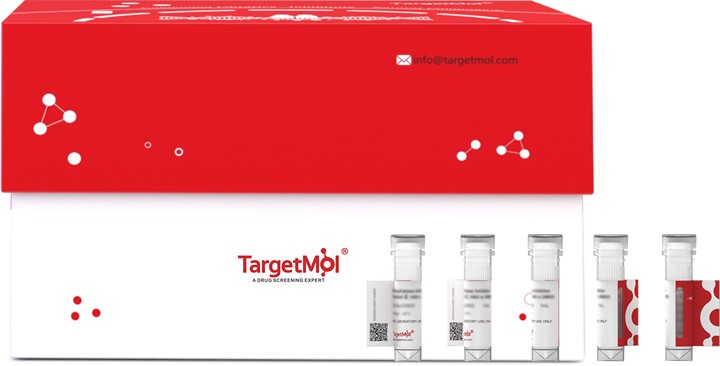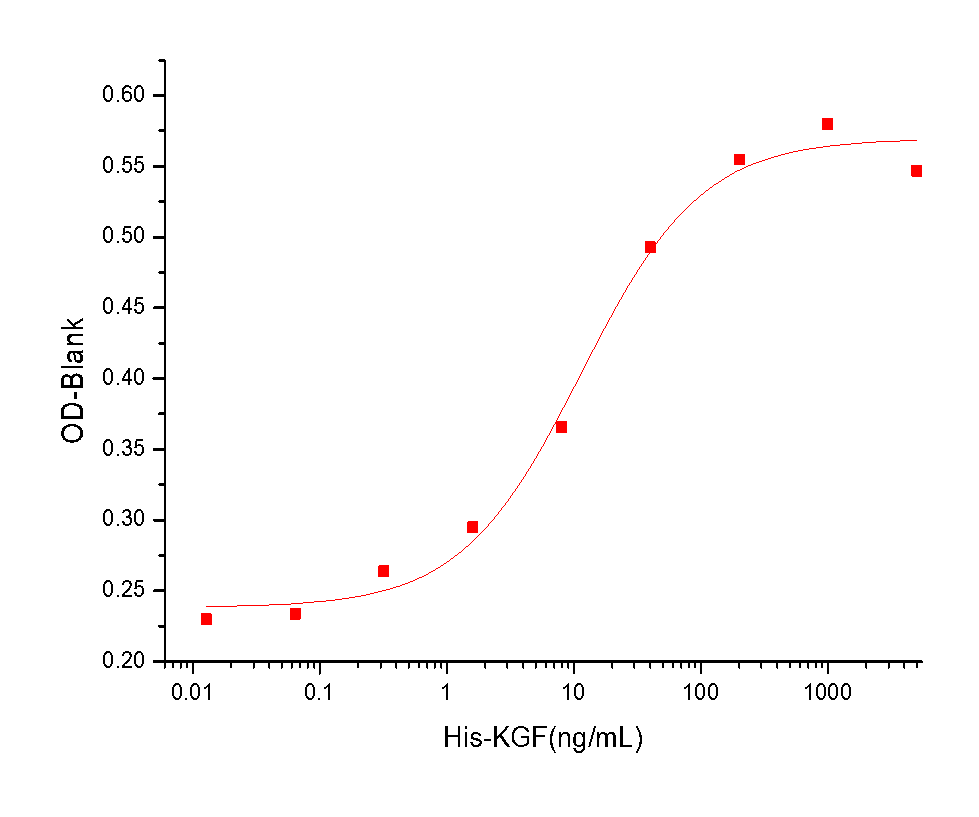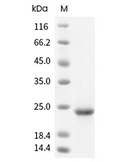Shopping Cart
- Remove All
 Your shopping cart is currently empty
Your shopping cart is currently empty
FGF-7/KGF Protein, Human, Recombinant (His) is expressed in E. coli expression system with His tag. The predicted molecular weight is 21 kDa and the accession number is P21781.

| Pack Size | Price | Availability | Quantity |
|---|---|---|---|
| 5 μg | $43 | 7-10 days | |
| 10 μg | $66 | 7-10 days | |
| 20 μg | $106 | In Stock | |
| 50 μg | $189 | 7-10 days | |
| 100 μg | $296 | 7-10 days | |
| 200 μg | $527 | 7-10 days |
| Biological Activity | Measured in a cell proliferation assay using BaF3 mouse pro-B cells transfected with human FGFR2b. The ED50 for this effect is typically 3-20 ng/mL.  |
| Description | FGF-7/KGF Protein, Human, Recombinant (His) is expressed in E. coli expression system with His tag. The predicted molecular weight is 21 kDa and the accession number is P21781. |
| Species | Human |
| Expression System | E. coli |
| Tag | N-His |
| Accession Number | P21781 |
| Synonyms | KGF,HBGF-7,fibroblast growth factor 7 |
| Construction | A DNA sequence encoding the human KGF (P21781) (Cys32-Thr194) was expressed with a polyhistidine tag at the N-terminus. Predicted N terminal: His |
| Protein Purity | ≥ 95 % as determined by SDS-PAGE. ≥ 95 % as determined by SEC-HPLC.   |
| Molecular Weight | 21 kDa (predicted); 23 kDa (reducing conditions) |
| Endotoxin | < 0.01 EU/μg of the protein. |
| Formulation | Lyophilized from a solution filtered through a 0.22 μm filter, containing 50 mM Tris, 250 mM NaCl, pH 7.5. Typically, a mixture containing 5% to 8% trehalose, mannitol, and 0.01% Tween 80 is incorporated as a protective agent before lyophilization. |
| Reconstitution | A Certificate of Analysis (CoA) containing reconstitution instructions is included with the products. Please refer to the CoA for detailed information. |
| Stability & Storage | It is recommended to store recombinant proteins at -20°C to -80°C for future use. Lyophilized powders can be stably stored for over 12 months, while liquid products can be stored for 6-12 months at -80°C. For reconstituted protein solutions, the solution can be stored at -20°C to -80°C for at least 3 months. Please avoid multiple freeze-thaw cycles and store products in aliquots. |
| Shipping | In general, Lyophilized powders are shipping with blue ice. |
| Research Background | Fibroblast growth factor 7 (FGF7) is a member of the fibroblast growth factor (FGF) family of proteins. FGF7 plays an important role in regulating the proliferation, migration, and differentiation of cells. FGF7 is of stromal origin and produces a paracrine effect on epithelial cells. FGF7 is a mesenchyme-specific heparin-binding growth factor that binds FGF receptor 2 (FGFR2) to regulate numerous cellular and physiological processes. FGF7/FGFR2 promotes invasion and migration in human gastric cancer. FGF7 is specifically utilized as a paracrine factor during the process of differentiation of the epidermal layers in the regenerating scales and in particular for beta-cells differentiation. FGF7 over expression is associated with advanced clinical features in patients with upper tract and bladder urothelial carcinoma, justifying its potential prognostic value for urothelial carcinoma. |

Copyright © 2015-2025 TargetMol Chemicals Inc. All Rights Reserved.